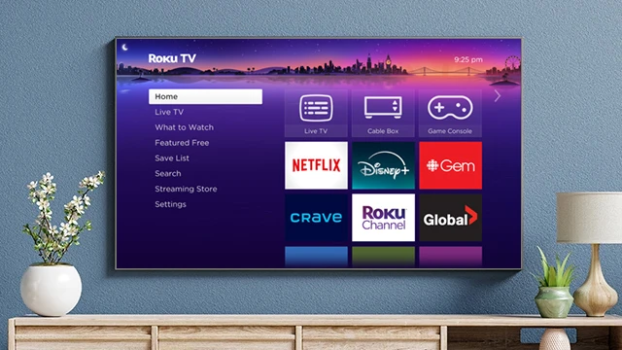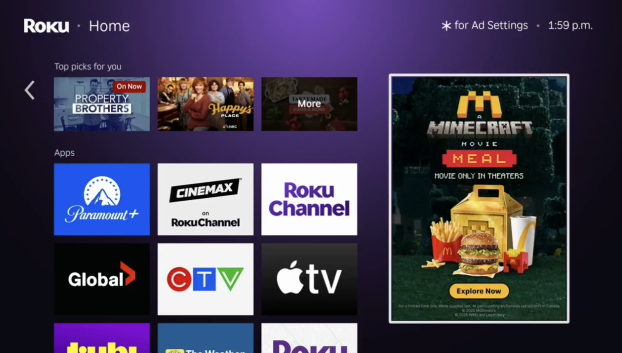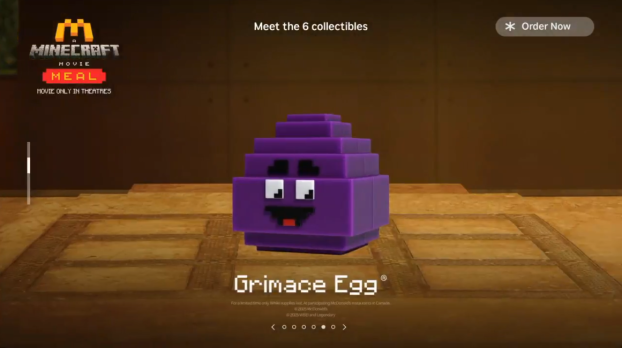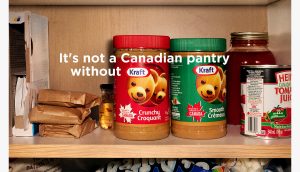
Connected TV isn’t emerging anymore – it’s ubiquitous. In Canada, the shift from linear to streaming has moved past early adoption and become mainstream, forcing a shift in how brands approach media planning across every vertical. And Roku has been foundational in making this shift possible.
“We’ve known for years that the shift to streaming was coming, but in the last 12 to 18 months, it’s here – both in terms of consumption and ad-supported inventory,” says Ivan Pehar, director, ad sales at Roku Canada. “What’s changed are the expectations around measurement. Brands don’t just want to know who saw their ad. They want to know what it made them do.”

As the number-one TV streaming platform in Canada by hours streamed (Hypothesis Group, Q4 2024) and the top-selling smart TV OS in the country as of 2024 (Circana, 2024), Roku is positioning itself as the operating system for the post-linear era. That distinction matters. Unlike traditional digital video platforms or streaming apps that sit on top of a device, Roku powers the device itself and owns its relationship with its customers. “We are the home screen,” says Pehar. “Whether someone’s opening Netflix, Crave or Disney+, their journey begins with us. That gives us visibility and access no one else has.”
That access is increasingly valuable to advertisers seeking to reach what have traditionally been “unreachable” audiences, particularly those who opt into ad-free subscriptions. Through home screen placements and immersive ad environments like Roku City, the platform has carved out new real estate for advertisers to reach even SVOD users who have paid to avoid ads.

McDonald’s Minecraft-themed campaign took over Roku’s Home Screen, with a Marquee Ad unit driving users to branded content.
McDonald’s Canada recently took advantage of that access through a high-impact campaign tied to its Minecraft partnership. The QSR executed a full takeover of the Roku City screensaver, reimagining its storefront and delivery vehicles in Minecraft’s blocky aesthetic. The experience extended to the Roku home screen, where users could navigate to additional branded content, watch videos and engage through sending an SMS text.

As part of a Roku City takeover, McDonald’s Canada recreated its storefront and a billboard in Minecraft’s signature pixelated style.
McDonald’s Canada also utilized a new ad unit, the Brand Showroom – an interactive scroll experience which showcases multiple items. In the case of McDonald’s, the showroom showcased Happy Meal toys. Other examples of showrooms have included car brands showcasing different car models.

McDonald’s Canada used Roku’s interactive Brand Showroom to spotlight the 6 collectible Happy Meal toys which were part of its Minecraft partnership.
The campaign represents Roku’s broader push into shoppable and interactive TV formats. While these formats are still gaining traction in Canada, Roku is betting that ease of use and integrated targeting will accelerate adoption. “If the QR code was part one, this is part two,” says Pehar. “You don’t need to find your phone. You just press a button on your remote: it’s all integrated.” According to Roku Internal Data, streamers are 118x more likely to pick up their remote and press OK to receive more information than pick up their phone to scan a QR code.
Rust-Oleum’s Colour Spark campaign shows how brands are using Roku’s platform to drive both inspiration and results. Working with Involved Media and Roku, the brand launched a custom DIY Content Guide featuring top-performing renovation titles to capture the attention of design-savvy streamers. Branded in-channel videos and immersive media placements allowed viewers to visualize Colour Spark’s premium paints within their own spaces, thanks to a virtual room visualizer tool that brought trending colours to life. The campaign exceeded benchmarks across the board, including a 98.4% video completion rate and a 12.1% engagement rate across the content guide tiles, while also driving 9% incremental reach among audiences not exposed to the brand’s linear campaign.

Roku is also leveraging automatic content recognition (ACR) technology to help advertisers bridge the gap between broadcast and CTV. Working with first-party registered user data and ACR, Roku was able to identify Roku households that had not seen Sport Chek’s linear TV campaign in the past 30 days. These households were then targeted with CTV placements, refreshed every 24 hours to ensure only net new users were reached. The result: a 3.3% incremental reach lift and a 98.5% video completion rate – well above Roku’s 95% benchmark. Notably, 68% of Roku households reached through the campaign had not seen the ad on linear at all.
Looking ahead, Pehar sees the demand for outcome-based metrics only growing. The ability to link CTV exposure to offline actions such as store visits, website traffic or CRM sign-ups is shifting how marketers view the medium. “It’s no longer enough to report on impressions or demographic reach. Brands want to know what moved the needle,” he says. Roku’s partnerships with measurement firms like Foursquare help validate those outcomes with third-party data.
As U.S. innovation in CTV continues to scale northward, Canada is well-positioned to move quickly, both as a fast-follower and as a testbed for up-and-coming formats. “We’re working with brands to define what success looks like,” says Pehar. “But we also know this isn’t one-to-one with digital or social. A shoppable ad on a 75-inch screen doesn’t behave like a Facebook click-through. We’re building new benchmarks for a new medium.”
Connected TV has moved past the tipping point. With streaming now a dominant viewing behaviour in Canada and platforms like Roku expanding both the reach and utility of the medium, CTV is a strategic channel. As advertisers look for ways to balance brand building with performance, CTV is offering a growing set of tools to do both. The infrastructure is in place. The audiences are already there. The opportunity now is to treat it not as an experimental layer, but as a central part of the media mix.
CONTACT:
Ivan Pehar
Director, Ad Sales Canada
ipehar@roku.com


















